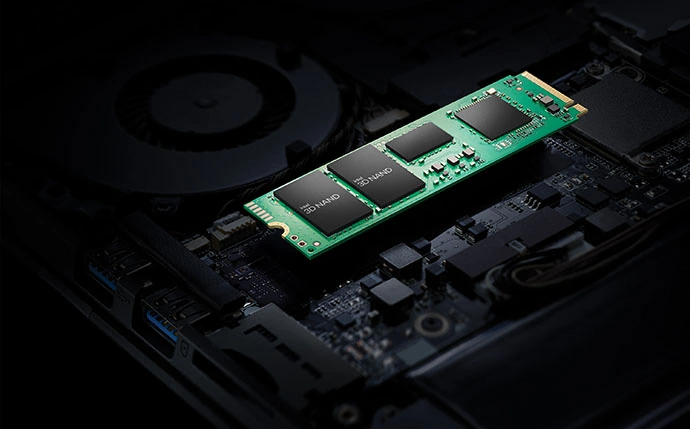The chip giant says the 670p offers double the sequential read speed and 20 percent higher endurance than the 660p, the firm's previous QLC-based NAND flash memory disk for the consumer market. The NVMe disk features an improved SLC caching algorithm as well as a better PCI Express 3.0 controller. You also get a 5-year warranty to ease the QLC concerns. This is not a speed monster but more of a mainstream product with read speeds of up to 3500MB/s and write speeds of up to 2700MB/s.
Pricing is $89 for the 512GB, $154 for the 1TB, and $329 for the 2TB edition. Various reviews hit the web today and the 670p seems to be performing very well for an entry-level NVMe disk. Obviously, it's not as fast as more expensive PCIe 4.0 models but it holds itself up well. The biggest negative is the pricing really, you can find TLC-based SSDs that undercut the 670p.
"The Intel SSD 670p is based on our 144-Layer QLC 3D NAND with 128 gigabytes per die and provides up to two times better read performance, 38% better random read performance and up to 50% better latency over our previous generation SSDs. By offering peak performance, capacities up to 2 terabytes, and improved reliability, the Intel SSD 670p is the ideal storage solution for thin-and-light laptops." –Rob Crooke, Intel senior vice president and general manager of the NAND Products and Solutions Group
What It Does: Developed using the latest QLC technology, the Intel SSD 670p is equipped with capacity of up to 2 terabytes in a single drive, offering tremendous value for everyday computing needs, as well as mainstream gaming. Compared with the previous generation Intel® QLC 3D NAND SSD, the 670p offers improved performance, including 2X sequential read and a 20% endurance update. Tuned for low queue depth and mixed workloads to meet the demands of today's most common computing needs, Intel's newest client drive offers the right balance of performance, cost and power
Why it Matters: Intel has been developing its QLC technology over the past decade to bring the performance and capacity needed to meet today's PC storage needs, including top-of-the-line storage and the ability to efficiently manage high volumes of data. Intel's QLC SSDs are built on floating gate technology -- their data retention is a key competitive differentiator. The Intel SSD 670p's new cell configuration results in high-capacity storage optimized for everyday computing needs at an affordable price and helps accelerate SSD adoption.
